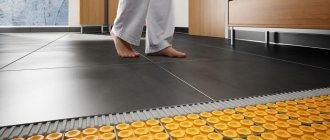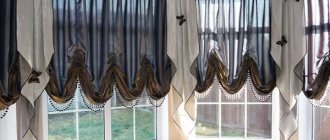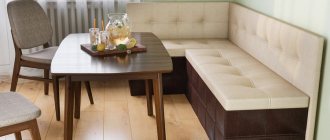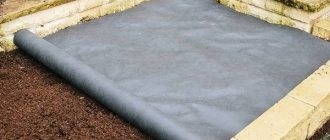Types and sizes of cable channels - what are they?
A cable channel is a specialized box that is used to provide mechanical protection for various wires (low-current networks and power cables), as well as special devices.
A cable channel is a specialized device (profile). As a rule, the box is made of plastic and aluminum. Manufactured boxes and mini-channels allow you to quickly install various systems. The products come in a variety of colors and surface types, providing high aesthetics in any type of room. The presence of a full range of accessories allows us to provide a systematic approach when designing cable support systems.
Types and sizes of cable channels in one picture:
Types and their characteristics
The construction goods market offers cable ducts of various designs.
Leading manufacturers produce the following products:
- floor;
- perforated;
- flexible;
- main lines;
- transparent;
- staircases;
- mini cables;
- parapet;
- baseboards;
- corner;
- wire;
Products are made of aluminum, steel, and plastic:
- Today, plastic cable channels are the most popular, as they have excellent characteristics. These models are often installed outdoors.
- Aluminum models are characterized by excellent fire performance. Therefore, they are used in enterprises and factories:
- flexibility;
- moisture resistance;
- strength;
- softness;
- Steel products can boast a variety of colors. High-quality galvanized steel has a special coating that prevents corrosion. Steel products have a long service life. The perforated base makes installation easy.
The most popular plastic channels are:
- Floor-standing. The special design allows you to install channels in hard-to-reach places. The oval shape reliably protects cables from mechanical damage. The models also have a beautiful appearance.
- Skirting. These models are used in apartments and private houses. A significant advantage is the special shape of the channels, which fits perfectly into any interior.
- Parapet. As a rule, such channels are installed in offices and enterprises. Most often they are used to protect wires from air conditioners and other devices. The design of the channels has strict shapes and correct geometry.
Depending on the color of the plastic channels, there are:
- light;
- white;
- colored;
- under dark and light wood;
Today, wooden trays are the most popular. In offices, as a rule, PVC ducts are used.
Modern areas of application of specialized channels are very diverse. This is due to the wide range of accessories for its installation:
- plugs;
- connecting corners;
- T-shaped corners;
- L-shaped corners;
- external and internal;
Today, a large number of companies are engaged in the manufacture and sale of specialized boxes. The most famous of them are:
- DKC;
- OMiS;
- ASKO;
- Teko;
- IEC;
- Moll;
- Legrand;
- Replast;
- ELEKOR;
double lock
The main advantages of modern cable channels are double lock , which combines flexibility and elasticity, as well as connection strength. The material itself is plastic, which is self-extinguishing. It allows installation of cables up to 1 thousand volts.
Also, there are mini cables on the market that differ in their shape. These devices have rounded corners and a special lid fastening mechanism, which creates the illusion of a monolithic structure and covers all seams, which is especially valuable for office aesthetes. In addition, the device is flexible and durable.
Modern models do not require post-installation cleaning. Since after installation the cable cover completely covers the base itself.
High-quality cables have the following advantages:
- Rostest certificate.
- Increased level of dust and moisture protection.
- Can be installed both indoors and outdoors.
The main parameter when choosing specialized boxes is the cross-section of the conductor. If you have an Internet cable, the most suitable one is a mini-model measuring 10 by 15 millimeters, which fits perfectly into the ergonomics of the apartment.
This model has the following advantages:
- Rounded shape.
- Aesthetic appearance.
- Made from environmentally friendly materials.
Dimensions
Modern technologies make it possible to produce specialized boxes of various sizes and designs:
- polygonal;
- triangular;
- and others;
The length of the product in the package is:
- 15 m;
- 16 m;
- 20 m;
- 42 m.
- 70 m.
- 100 m.
Section:
- 12×12;
- 16×16;
- 20×10;
- 40×16;
- 60×40;
- 80×40;
- 100×60 and others;
Of course, the construction market offers standard devices that have average characteristics.
The most popular are square-shaped plastic covers, which are used to protect various cables.
cable channel 100×60
These devices have different sizes and characteristics. Installation of products is carried out in 2 ways. Thanks to special latches, installation of the box is carried out in the shortest possible time. In order to choose a model, you need to take into account the number of wires. Since the size of the device will depend on this.
The most common sizes of specialized boxes:
- 80×60;
- 60×40;
- 40×16;
- 25×16;
- 12×12;
- 100×60;
- 80×40;
- 40×25;
- 25×25;
- 16×16;
The most common cables are 100*60 and 12*12. Various couplings are used to connect boxes. As a rule, models are sold in the form of planks (2 meters). All plastic models are attached in a standard way.
Using a screwdriver, the device is screwed to the surface. All additional components and accessories must be purchased separately.
Laying methods
Usually, the cable channel is attached to the wall with self-tapping screws. However, some craftsmen do this with three-sided adhesive tape or liquid nails. It is advisable to carry out installation in the old and proven way.
You can determine the length of a piece in 2 ways:
- Using a tape measure.
- Place the box against the wall where possible and mark it with a pencil.
A separate topic is the execution of joints.
Here it is important to carefully trim the cable duct using:
- stationery knife;
- hacksaws;
- reinforced scissors;
Modern cable channels are resistant to fading . They do not age or turn yellow over time. Also, they are resistant to the spread of combustion, since they are made of self-extinguishing ABS plastic.
Installation instructions
The profile of the new cable channels comes with special holes. You save a lot of time because you don't need to drill the bottom of the profile. In addition, ready-made holes allow you to level the fixtures.
There are 2 options for attaching the profile to the wall:
- Classical.
- Using dowels and special tools.
The installation result is excellent. The dividing partition helps to carefully align the profile at the joint. When all the profiles are joined, the joint cover adapts to the depth of the profile and is simply glued.
To install cable channels, follow the instructions provided:
- Unpack the product.
- Remove the top covers.
- Create the necessary markings along the walls.
- Cut the box to the required length (you can use a saw or knife for this).
- Remove the upper part from the channel.
- Place the box in the required location.
- Place a level on the product.
- Align the channel.
- Make holes (for installation using dowel nails).
- Secure the product (for this you can use glue, dowels, etc.).
- Lay the necessary wires (install sockets if necessary).
- Close the product.
- Clean up the construction site.
There are 2 types of partitions:
Load-bearing partitions allow you to mount covers on multi-section cable channels. The flat corner is mounted as simply as possible. Its design guarantees perfect separation of sections of insulated wires.
The internal angles are variable, they consist of 2 parts:
They adapt perfectly to wall corners and are easily installed on the cable channel profile. The external corners are also variable and can be easily snapped onto the profile. By design, corners are one-piece accessories, completely ready for installation.
For multi-section cable channels there are corner separators. They are supplied with corners and provide a real separation of low and high currents when wires pass through corners. The angles vary smoothly in the range of 60–120 degrees, which allows installation on any wall configuration.
Cable holders hold all the wires inside the profile and provide you with even more ease of installation. The plug adapts to different sections thanks to its streamlined parts, and the front part of the plug will not get lost during operation.
Flexible covers can be easily and simply installed along the entire length of the cable channel and at corners, and the appearance of the installation is simply delightful. An overlay at the junction of the lids with a non-losable decorative lid allows for easy joining with the next lid. The new dedicated box gives you a complete solution for even the most complex installations.
The corresponding cover is mounted on the load-bearing partition. This load-bearing partition can also serve as a separator to separate 2 sections with the same lid.
Recommendations
- The first thing you need to look at is the appearance. The appearance must meet your requirements.
- After this, you need to look at the plasticity of the device. To do this, the box needs to be twisted. If the profile comes back, then the quality of the plastic is good.
- The easiest way to check the model is to bend it and open the lid. The device must bend and not break. If the lid breaks, it means too much has been added to the other ingredients.
- Naturally , you need to pay attention to the presence of a double lock.
Once you close the lock, it should lock and not open.
What else can you do to check the quality? Considering that the specialized box will be located somewhere on the wall or ceiling, the cover must withstand the weight of the cable that will press on it.
Let's indicate what characteristics of the model can be found out experimentally.
In order to see how firmly the lid is attached to the box itself, you need to make a simple device - hang a piece of the box and cut the lid into 2 parts. First you need to secure 1 part.
The double lock should slam shut. Then you need to make an ordinary piece of metal strip and rope. The bar is inserted into the box and closed with a lid. The result is a special system. In order to check the strength of the structure, you can pick up a brick or other object.
Source: https://slarkenergy.ru/provodka/skrytaya/raznovidnosti-i-razmery-kabel-kanalov.html
Advantages and disadvantages of cable channels made of various materials
- When using aluminum.
They are used in the installation of electrical networks of enterprises, as well as by designers when creating the Hi-Tech style, in residential and administrative premises.
Advantages:
- Impact resistance;
- Serve as a screen that protects equipment from exposure to electromagnetic fields;
- Resistance to sunlight;
- Fire resistance;
- Able to withstand high temperatures without deformation of the structure.
Flaws:
- Relatively high cost;
- Difficulty in performing installation work.
- When using galvanized steel.
They are made from sheet metal and are used in various classes of premises, both in industrial enterprises and in administrative buildings.
Advantages:
- Non-flammability and fire safety;
- At the same time, they protect the wires laid in them from mechanical damage and shield the effects of the electromagnetic field on equipment installed in the room where electrical wiring is performed;
- Ease of installation work;
- Variety of colors;
- Convenient operation, allowing you to re-route wires without special tools and equipment.
Flaws:
- Relatively high cost.
- When using plastic.
Plastic cable channels are the most famous among users. Available in various sections (box, triangle, circle) and colors.
Advantages:
- Easy installation;
- Lightness of the product (low specific gravity);
- Corrosion resistance (not subject to oxidation and rotting);
- Able to withstand temperature changes;
- Low cost.
Flaws:
- Under the influence of high temperatures they deform;
- When burned, they release substances that are harmful to others.
Cable channels for electrical wiring: types, types, sizes, application
If for some reason it is not possible to make hidden electrical wiring or the wires need to be inspected regularly, then mounting brackets, terminals, boxes, clamps and other similar devices are used as fastenings. But their common drawback is that the wires remain open, and this is not always acceptable. To hide electrical wiring, electrical installation cable channels are used, the types and sizes of which we will consider in this article.
Most often, plastic types of cable channels are used for laying information cables in offices and, if necessary, to make open or temporary wiring - in this case, power cables and wires for lighting lines are also laid in them.
Shape, materials and dimensions
Initially, these were white or gray profiles, rectangular in cross-section in the shape of the letter “P” (single-section) or “W” (two or more sections). Then they began to produce cable channels of various shapes and colors, intended for laying cables for various purposes.
Triangular cable channels or in the shape of a hemisphere appeared - it became more convenient to use them for wires for various purposes, depending on the purpose of the room, the materials used in its decoration and the need for free access to the cables hidden inside.
U-shaped cable channel.
Triangular cable channel.
Sh-shaped cable channel.
Cable channel in the form of a hemisphere.
For the production of cable channels, non-flammable PVC or polyethylene is used. The length of one section is usually 2 meters, but manufacturers may use other standards, so longer cable channels can be found if necessary. The cross-sectional width and height range from 10 to 60 mm, but there may be exceptions here.
The most popular are U-shaped cable channels. U-shaped cable channels can be made with solid or perforated walls. Their advantages include lower weight and lower price.
Dimensions of U-shaped cable channels and their useful cross-section:
ProfileSize (width × height), mmUseful cross-section, mm2Wall thickness, mm
| 12x12 | 130 | 1 |
| 15x10 | 135 | 1 |
| 16x16 | 230 | 1 |
| 20x10 | 180 | 1 |
| 25x16 | 360 | 1,1 |
| 25x25 | 563 | 1,1 |
| 40x16 | 576 | 1,3 |
| 40x25 | 900 | 1,3 |
| 40x40 | 1440 | 1,3 |
| 60x40 | 2160 | 1,7 |
| 60x60 | 3240 | 1,7 |
| 80x40 | 2880 | 1,7 |
| 80x60 | 4320 | 1,7 |
| 100x40 | 3600 | 2 |
| 100x60 | 5400 | 2 |
*The useful cross-section of cable channels from some manufacturers may differ from that shown in the table.
Surface attachment method
Depending on the material of the surface on which the cable channel needs to be secured, collapsible and non-removable fasteners are used.
The first include dowel-nails (6Ch40), metal staples or self-tapping screws - for them, holes are cut in some cable channels from the factory.
Permanent fasteners are used on plasters and similar materials - cable channels are simply glued to them (although here the weight of the box with wires must be taken into account).
Additional items
To avoid having to manually cut boxes for turns or branches of the highway, manufacturers produce additional elements - turning corners, tees, plugs, etc. for each type of cable channels. They allow you to create wiring of any complexity without damaging the interior or wasting time on installation.
There are also separate fastenings for sockets and switches - these elements of the electrical circuit are mounted in special elements that are fixed directly into the cable channel.
Floor and baseboard cable channels
Floor and baseboard cable ducts are a separate category.
Floor cable channels.
All floor and plinth cable channels also have their own additional elements that simplify the laying of highways.
Plinth cable channels are hollow inside and can accommodate many wires. This is an excellent option for laying antenna or computer cables.
+ Pros of cable channels
- There is no need to groove walls to lay wires.
- The laid cable is always open for inspection - you can always lay an additional line nearby.
- Despite its apparent softness, the cable channel additionally protects the wires laid in it from mechanical damage.
- The installation of the main line is carried out as quickly as possible.
- Various forms of cable channels allow you to fit the external electrical wiring line into most interior solutions.
– Cons of cable channels
- Sometimes cable channels do not look at all in the interior of the room.
- The box “takes away” several centimeters of space from the wall.
- It is easy to accidentally snag the cable channel - knock it off the fastening or break it.
- High-quality installation is only possible with the use of a large number of additional accessories - turns, branches, etc.
Since metal trays and boxes are designed for heavy loads, the need to use them in domestic conditions arises quite rarely.
The types and sizes of metal cable ducts are mainly suitable for external and internal laying of cables in industrial premises where there are highways consisting of a large number of wires.
To prevent the material of the boxes from rusting, galvanized steel is used in their production. Like plastic ones, the cross-section of metal cable channels is U-shaped - with or without a cover.
Depending on the conditions of use, perforated, smooth and ladder trays are manufactured. The former are easier to install and secure cables inside, while the latter are heavier and are installed on special supports.
Cable tray sizes:
Dimensions (width × height × length), mm Metal thickness, mm Useful cross-sectional area, cm2
| 50×50×2500 | 0,55 | 24,22 |
| 100×50×2500 | 0,55 | 48,44 |
| 200×50×2500 | 0,7 | 98,44 |
| 300×50×2500 | 0,7 | 147,44 |
| 400×50×2500 | 1,0 | 198,44 |
Due to their heavy weight, gluing metal boxes is not practiced - they are attached to the surface with anchors, dowels, or “mounted” on a bolted connection. To install smooth trays, shelves or brackets pre-fixed to the surface are used.
Most often, metal boxes are used to form electrical lines in raised floors or suspended ceilings. For their installation, additional blocks are used - rotating, lifting (for transferring wires between planes), branching, etc.
+ Pros of metal cable channels
- Withstands the weight of a large number of power cables.
- They allow you to easily trace the route of any cable, provide ease of installation and easy access for inspection or replacement.
- An additional plus for fire safety.
– Disadvantages of metal cable channels
- Greater weight requires more serious installation work.
- It is more difficult to process during installation (if cutting is required).
- These types of cable channels for electrical wiring necessarily require additional components for the installation of turns and transitions.
Corrugated plastic pipes
If cable channels, plastic or metal, are more suitable for flat surfaces, then in the case of frequent transitions between planes or turns, their installation will be extremely difficult due to the need to use a large number of additional components. In such conditions, a more suitable material would be flexible pipes that bend at any angle and are attached along the entire length to standard clips.
Externally, a corrugated plastic pipe looks like an elastic channel with a circular cross-section. It is used for laying any cables and wires, providing them with additional protection from moisture and mechanical damage. Mainly used when installing electrical circuits with complex wire routing paths - raised floors, suspended ceilings, electrical wiring behind plasterboard walls.
Dimensions and components
PVC is used for the production of corrugated plastic pipes. Most often, products with an internal diameter from 16 to 32 mm are used, but when choosing, you must additionally pay attention to the purpose of the corrugation - it can be light or heavy.
The first are standard products that are used for installing electrical circuit lines inside buildings. Heavy corrugations provide more solid protection and can be used outdoors, and in some cases, under water.
Since in long highways it is not always possible to push a wire through a pipe without auxiliary parts, additional corrugations can be equipped with probes made of metal single-core “steel”, however, installers usually have their own.
Dimensions of corrugated pipes for cable:
Header Outer diameter, mmInner diameter, mm
| Corrugated PVC pipe without probe | 16 | 10,7 |
| 20 | 14,1 | |
| 25 | 18,3 | |
| 32 | 24,3 | |
| 40 | 31,2 | |
| 50 | 39,6 | |
| 63 | 5,6 | |
| Corrugated PVC pipe with probe | 16 | 10,7 |
| 20 | 14,1 | |
| 25 | 18,3 | |
| 32 | 24,3 | |
| 40 | 31,2 | |
| 50 | 39,6 | |
| 63 | 50,6 |
+ Advantages of plastic corrugated pipes
- Indispensable for laying wires on uneven surfaces or when it is necessary to make frequent turns in the highway.
- Usually sealed along the entire length, therefore they reliably protect the wires from high humidity.
- Additional protection of cables from mechanical damage and people from electric shock.
- Clip-on mounting is one of the easiest to install and maintain - you can insert or remove the corrugation from them without additional tools.
- In addition to fire safety, the plastic from which the corrugation is made contains additives that prevent combustion. When the wiring is shorted, the corrugation will not flare up, but will simply melt.
– Disadvantages of plastic corrugated pipes
- They do not tolerate negative temperatures well - when overcooled, they lose elasticity and break, so they are more suitable for interior work.
- If there are too many turns and bends, pulling the cable inside the corrugation will be very difficult and sometimes impossible, so you will have to first pull the wires inside and then carry out the general installation.
A distinctive feature of metal hoses from plastic pipes is the manufacturing method. If the latter are completely solid and sealed, then the metal ones are twisted from galvanized steel tape, which determines the advantages and disadvantages of use.
Dimensions of metal sleeves for cable:
Outer diameter, mmInner diameter, mm
| 11,6 | 7,8 |
| 13,9 | 9,1 |
| 15,9 | 10,9 |
| 18,9 | 14,9 |
| 21,9 | 16,9 |
| 24 | 18,7 |
| 26 | 20,7 |
| 30,8 | 23,7 |
| 38 | 30,4 |
| 44 | 36,4 |
| 58,7 | 46,5 |
All other parameters are similar to PVC pipes.
+ Advantages of corrugated metal pipes
- More reliable protection of wires from mechanical damage.
- If the metal hose is grounded, it will act as an additional electromagnetic shield - in some cases, when laying information cables, this is a significant advantage.
- Easy to install.
– Disadvantages of corrugated metal pipes
- Since the pipe is not solid, it cannot be used in conditions requiring a hermetically sealed connection.
- Weight and cost are higher than those of plastic analogues.
- Insensitive to negative temperatures.
Smooth rigid pipes for electrical wiring
Smooth rigid pipes are used for maximum protection of laid electrical wiring and ease of maintenance. If you bury the wires in a wall in a rigid pipe, you get all the benefits of hidden wiring, but if repairs are necessary, you won’t have to trench the walls - the cables are simply pulled out for repair or replacement.
Dimensions of rigid cable pipes:
Outer diameter, mmInner diameter, mm
| 16 | 13,6 |
| 20 | 17,0 |
| 25 | 22,0 |
| 32 | 28,4 |
| 40 | 36,2 |
| 50 | 46,4 |
| 63 | 56,5 |
+ Advantages of smooth rigid pipes for electrical wiring
- Even in the event of a serious short circuit, they protect a person from electric shock.
- Plus fire safety.
- Relatively low weight and installation costs.
– Disadvantages of smooth hard pipes for electrical wiring
- Rigid pipes require the use of additional accessories to create turns and additional branching lines.
- With a large number of turns, it is difficult to pull wires.
- Additional components are required for installation: corners, plugs, tees, etc.
These are all the most common types and types of cable channels for electrical wiring in domestic and industrial environments. Which of them to use must be decided in each specific case separately - depending on the specific conditions.
Source: https://srbu.ru/elektrika-v-dome-i-kvartire/461-kabel-kanaly-vidy-i-razmery.html
Installation of baseboard-type cable channels
Depending on the type of cable-supporting systems, the installation method may vary, but since, as a rule, installation is carried out independently when repairing electrical wiring in individual households and apartments, the option of performing work on installing a baseboard-type cable channel is discussed below.
The work is carried out in several stages:
- Preparatory work. At this stage of the work, blanks of the required size are cut, taking into account corners (internal and external), plugs, as well as installation locations for electrical installation products (sockets, switches), which are mounted in special boxes.
- Preliminary work. The cable channel is laid out along its route and the attachment points on the wall surface are determined. The distance between fastening elements should be no more than 0.5 meters.
Tip #2. For fastening, special clamps, self-tapping screws or liquid nails are used, depending on the material from which the wall is made.
Installation of cable channel
Work is carried out starting from the farthest point (corner) of the room in which installation is being carried out, in the following sequence.
- The outer part of the plinth (decorative profile) is detached;
- A straight piece of plinth is taken, at one end of which a corner, usually an internal one, is inserted, and at the second, depending on the configuration of the room, a connecting jumper or another corner is inserted.
- The cable duct is installed at the marked fastening points. When fastening using self-tapping screws, drilling is performed directly into the wall; when installing using clamps or dowels, a hole is first drilled into which the dowel is then inserted and a fixing device (screw, clamp) is screwed into it.
- If it is necessary to install boxes, they are fastened in the same way as fastening a plinth to a wall, with the ends of the cable channel inserted into the internal plane of the structural element.
- The cable channel is fastened along its entire length.
Final stage:
- After completing the installation of the plinth, the debris generated during drilling of the walls is removed.
- The decorative profile is being installed.
Schematically, the installation of a plinth-type cable channel can be shown as follows:
Legrand plinth-type cable duct system
Metal cable channels types and sizes
A cable channel is a specialized box that is used to provide mechanical protection for various wires (low-current networks and power cables), as well as special devices. A cable channel is a specialized device (profile). As a rule, the box is made of plastic and aluminum.
Manufactured boxes and mini-channels allow you to quickly install various systems. The products come in a variety of colors and surface types, providing high aesthetics in any type of room. The presence of a full range of accessories allows us to provide a systematic approach when designing cable support systems.
Types and sizes of cable channels in one picture:
Advantages and disadvantages of various designs
- For perforated products.
The main advantage of this type of cable ducts is their lower weight compared to products made from sheet metal and solid molded plastic. In addition, the advantages of this design are:
- Ventilation of the internal space allows you to maintain a more favorable operating mode for wires and cables laid inside such products;
- Low cost in comparison with analogues;
- Availability for inspection of laid cables and wires;
- Possibility of installation on curved surfaces.
This type of cable ducts is used when installing electrical cabinets and assemblies, when the appearance of the structure is not a fundamentally important condition for performing electrical wiring.
Errors when installing cable channels
When installing cable channels of various types, regardless of the type of structure and installation location, various errors are possible. Here are the most common ones:
- When marking, the necessary margin for making corner connections and installing boxes is not taken into account.
- The mounting option does not match the wall material.
- The standard size of the cable channel has been selected, which does not allow laying wires of the required cross-section.
- The type of cable channel does not correspond to the class and purpose of the room in which the installation is being carried out.
- When installing flexible products, the installation is carried out “in tension”.











